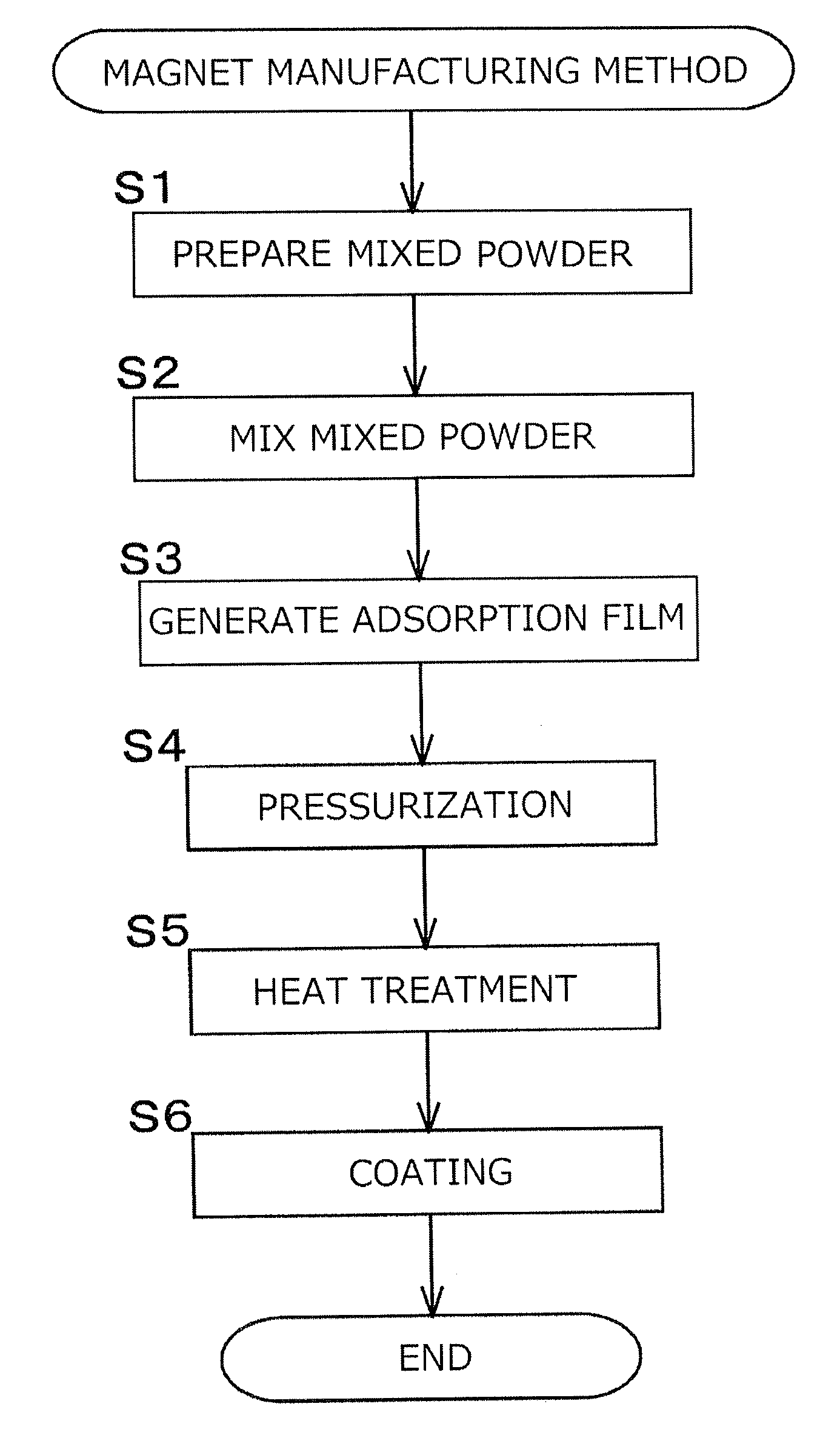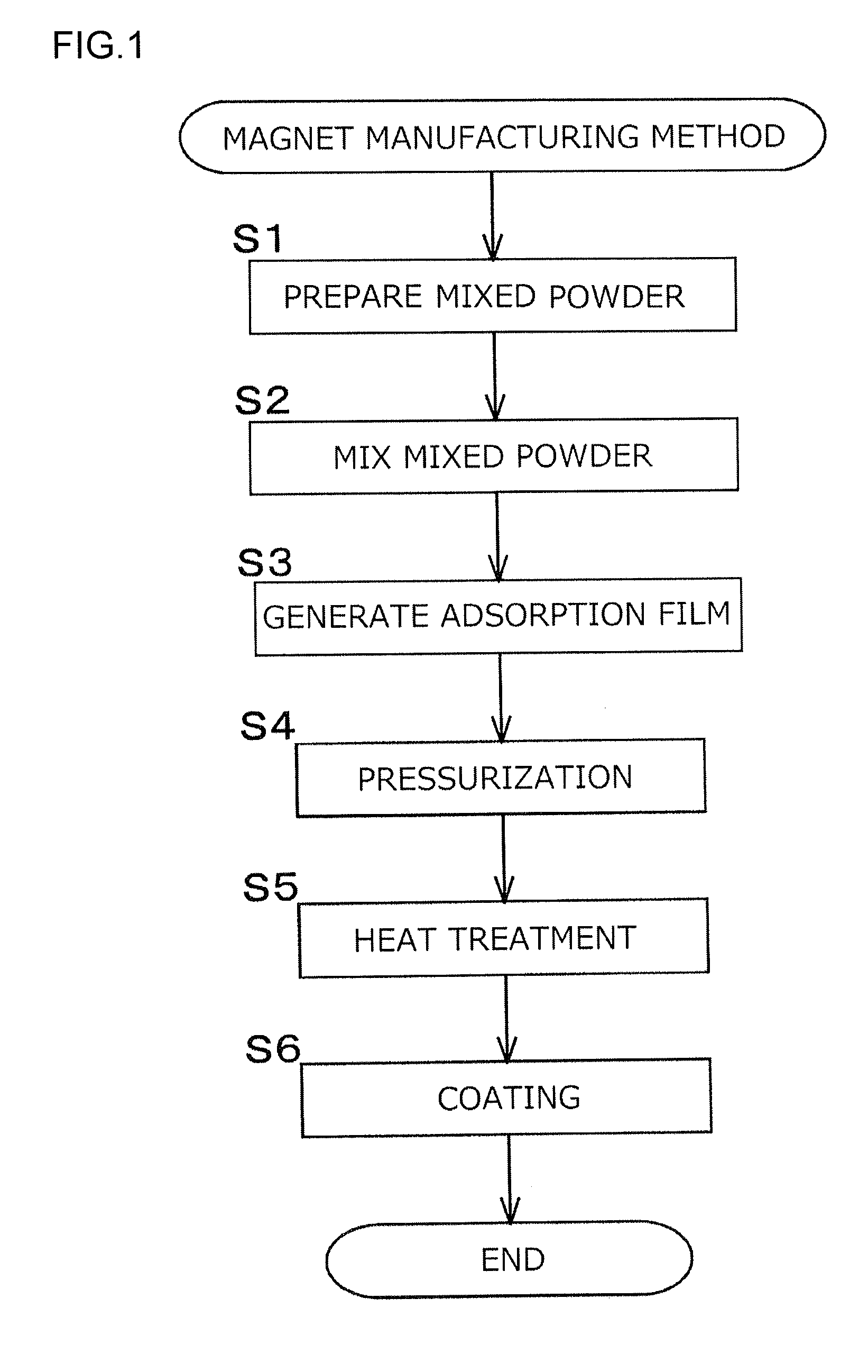Magnet Manufacturing Method And Magnet
a manufacturing method and magnet technology, applied in the field of magnet manufacturing methods and magnets, can solve the problems of reduced residual magnetic flux density, difficult sintering, and reduced magnet density, and achieve the effect of high residual magnetic flux density
- Summary
- Abstract
- Description
- Claims
- Application Information
AI Technical Summary
Benefits of technology
Problems solved by technology
Method used
Image
Examples
Embodiment Construction
[0033]A magnet manufacturing method according to the invention will be described as an embodiment with reference to FIGS. 1 to 10. FIG. 1 is a diagram illustrating steps of the magnet manufacturing method of a first embodiment.
[0034]As illustrated in step S1 in FIG. 1, mixed powder is prepared which contains magnetic powder 1 of a hard magnetic material as a raw material for a magnet and a lubricant 2 that allows formation of an adsorption film on a surface of the magnetic powder 1.
[0035]As the magnetic powder 1, a compound is used which includes one or more of an Fe—N-based compound and an R—Fe—N-based compound. A rare earth element represented by R is preferably an element that is known as a so-called rare earth element and that is other than Dy. In particular, light rare earth elements are preferable, and among the light rare earth elements, Sm is suitable. The light rare earth elements described herein refer to elements included in lanthanoids and having a smaller atomic weight ...
PUM
| Property | Measurement | Unit |
|---|---|---|
| particle size | aaaaa | aaaaa |
| specific gravity | aaaaa | aaaaa |
| specific gravity | aaaaa | aaaaa |
Abstract
Description
Claims
Application Information
 Login to View More
Login to View More - R&D
- Intellectual Property
- Life Sciences
- Materials
- Tech Scout
- Unparalleled Data Quality
- Higher Quality Content
- 60% Fewer Hallucinations
Browse by: Latest US Patents, China's latest patents, Technical Efficacy Thesaurus, Application Domain, Technology Topic, Popular Technical Reports.
© 2025 PatSnap. All rights reserved.Legal|Privacy policy|Modern Slavery Act Transparency Statement|Sitemap|About US| Contact US: help@patsnap.com



